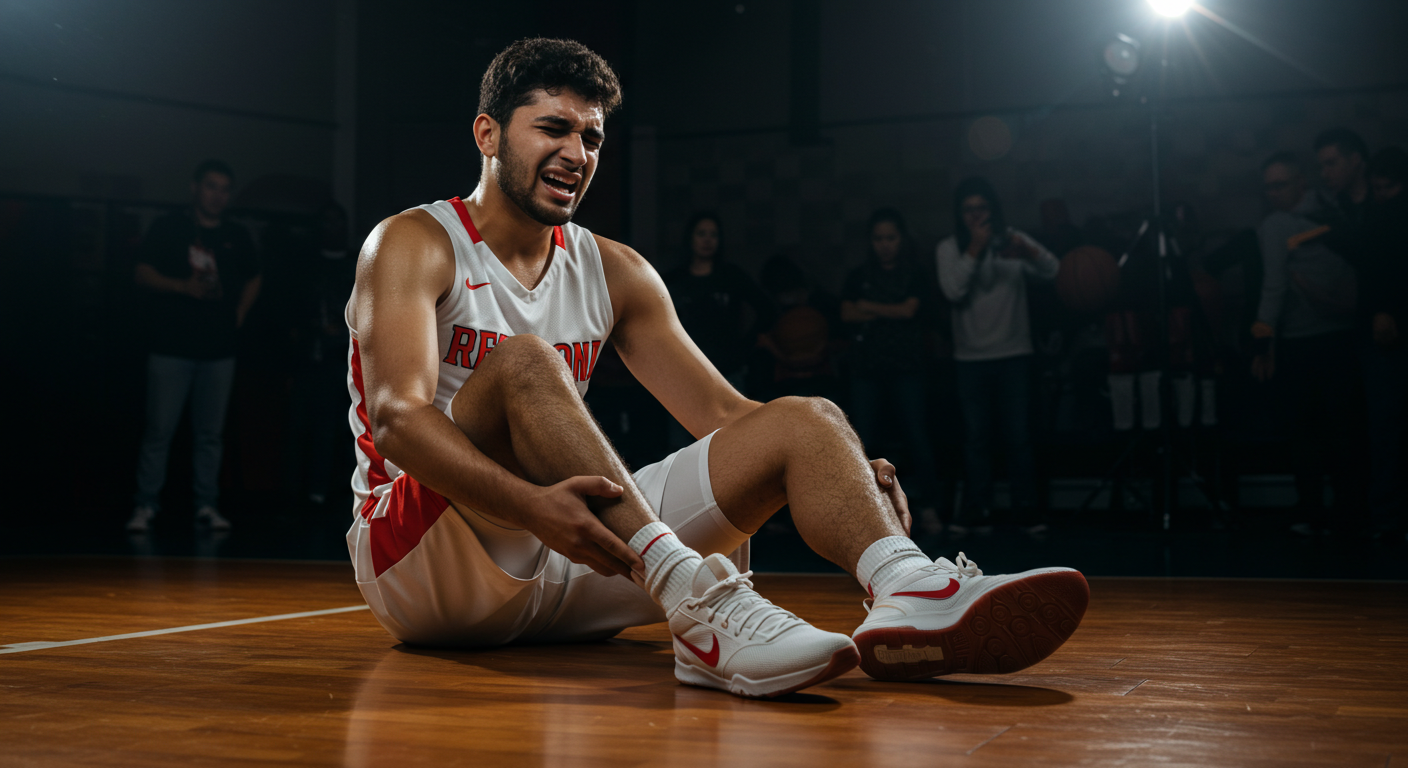Common Badminton Injuries and How to Prevent Them
Introduction
Badminton is a high-intensity sport that requires speed, agility, and endurance. However, frequent movements such as jumping, lunging, and quick directional changes put players at risk of common badminton injuries. From ankle sprains to shoulder strains, these injuries can hinder performance and lead to long recovery periods if not addressed properly.
Understanding the most common badminton injuries and implementing effective prevention strategies is essential for maintaining peak performance and staying injury-free. In this guide, we’ll explore key injuries in badminton, their causes, symptoms, and how you can prevent them.
1. Ankle Sprains – A Frequent Badminton Injury
Causes:
Ankle sprains are one of the most common badminton injuries, often caused by sudden lateral movements, improper landings, or accidental twists during play.
Symptoms:
-
Swelling and bruising around the ankle
-
Pain when moving or putting weight on the foot
-
Limited range of motion
Prevention:
-
Wear badminton shoes with proper grip and ankle support
-
Strengthen ankle muscles with balance exercises
-
Warm up before matches to improve flexibility
2. Tennis Elbow – A Badminton Player’s Arm Pain
Causes:
Tennis elbow (lateral epicondylitis) is a repetitive strain injury affecting the forearm tendons. In badminton, excessive wrist flicking and improper racket grip can contribute to this condition.
Symptoms:
-
Pain and tenderness on the outer part of the elbow
-
Weak grip strength
-
Discomfort when lifting objects or using a racket
Prevention:
-
Use a racket with the correct grip size
-
Strengthen forearm muscles through resistance exercises
-
Apply ice therapy and rest when pain starts
3. Knee Injuries – Common in Badminton Players
Causes:
Fast-paced lunges, jumps, and abrupt stops make knee injuries one of the most common badminton injuries. Jumper’s knee (patellar tendinitis) results from repetitive stress, while ACL injuries occur from sudden pivots.
Symptoms:
-
Knee pain, especially in the front
-
Swelling and instability
-
Stiffness after prolonged activity
Prevention:
-
Strengthen leg muscles, especially quadriceps and hamstrings
-
Wear knee braces if necessary for extra support
-
Avoid excessive jumping without proper landing techniques
4. Shoulder Injuries – A Risk for Badminton Players
Causes:
Badminton players frequently use overhead shots, leading to shoulder-related injuries such as rotator cuff strain or shoulder impingement. Repetitive smashes and improper technique increase the risk.
Symptoms:
-
Shoulder pain, especially during overhead shots
-
Weakness when lifting the arm
-
Limited range of motion and stiffness
Prevention:
-
Strengthen shoulder muscles with targeted exercises
-
Use proper technique when performing smashes
-
Take breaks and avoid overuse of the shoulder
5. Lower Back Pain – A Common Badminton Injury
Causes:
Continuous bending, twisting, and lunging can strain the lower back muscles, making back pain one of the common badminton injuries players experience.
Symptoms:
-
Dull or sharp pain in the lower back
-
Stiffness, especially after playing
-
Discomfort when bending or twisting
Prevention:
-
Strengthen core muscles to provide back support
-
Maintain proper posture while playing
-
Stretch before and after games
6. Achilles Tendon Injuries – Preventing Badminton Tendonitis
Causes:
The Achilles tendon connects the calf muscles to the heel. Badminton players risk tendon injuries due to explosive movements, sudden stops, or improper stretching.
Symptoms:
-
Pain at the back of the ankle
-
Swelling around the tendon
-
Stiffness that worsens after rest
Prevention:
-
Perform calf-strengthening and stretching exercises
-
Use well-cushioned shoes to support the heel
-
Gradually increase training intensity to avoid tendon overuse
7. Wrist Strain – A Repetitive Badminton Injury
Causes:
Repeated wrist movements, such as flicking and smashing, can cause wrist-related injuries in badminton. Poor technique and overuse contribute to strain and inflammation.
Symptoms:
-
Pain and stiffness in the wrist
-
Weak grip strength
-
Swelling or tenderness around the joint
Prevention:
-
Strengthen wrist muscles through grip training
-
Ensure proper grip technique while playing
-
Take breaks to avoid excessive strain
General Tips to Prevent Badminton Injuries
1. Warm Up and Cool Down Properly
Warming up prepares the body for intense movement, while cooling down reduces muscle stiffness. Dynamic stretches before a match and static stretches afterward can prevent injuries.
2. Strength Training for Injury Prevention
Building strength in key muscle groups, including the legs, core, and shoulders, provides better support for joints and reduces injury risk.
3. Use the Right Equipment
-
Choose badminton shoes with good grip and cushioning
-
Use a racket with the correct grip size and weight
4. Listen to Your Body
Ignoring minor aches and pains can lead to serious injuries. If you experience discomfort, take rest and seek professional advice if necessary.
Conclusion
Playing badminton comes with the risk of injuries, but by understanding the most common badminton injuries and following prevention strategies, players can stay active and improve their performance without setbacks. Proper warm-ups, strength training, correct technique, and the right gear all contribute to an injury-free badminton experience.
For more information on injury prevention and recovery, visit the Badminton World Federation’s official website.
GHC Sportswear

